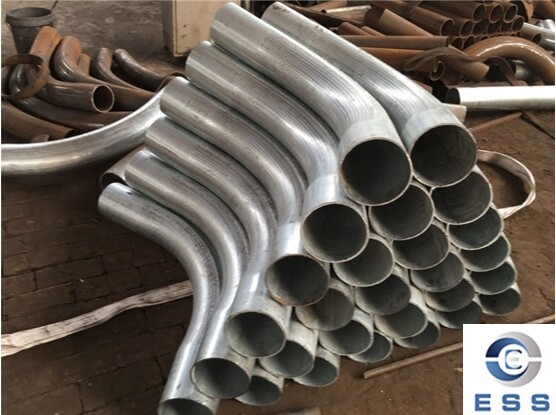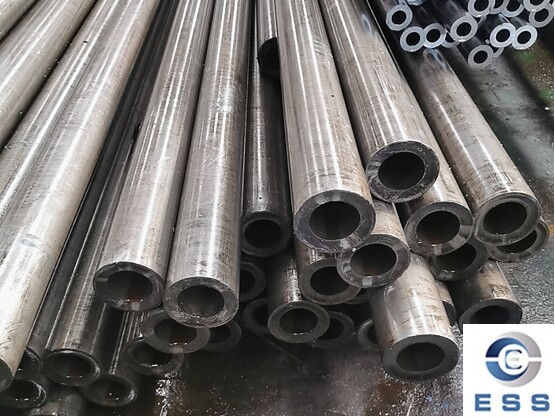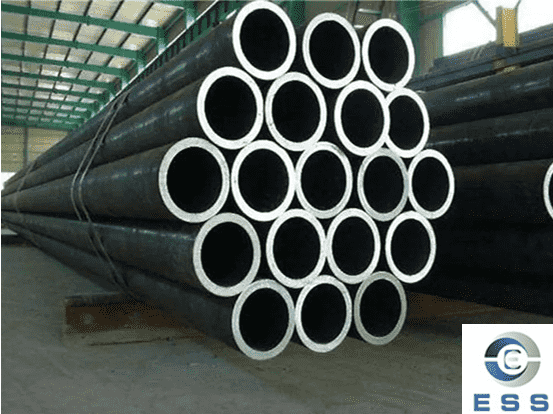
As a high-precision, high-strength pipe
material, precision
tubes are widely used in machinery, chemicals, automobiles, construction
and other industries. However, many people have doubts about whether precision
tubes can be bent. Can precision tubes be bent? The answer is yes, but due to
the high precision and strength of precision steel tubes, appropriate processes
and equipment need to be used in the bending process to ensure the quality and
effect of the bending.
The latest industry data shows that the
bending pass rate of precision tubes processed by the correct process can reach
98.6%, but improper operation will result in a scrap rate of more than 30%.
Three conditions must be met for successful pipe bending:
Material properties: Carbon
steel pipe above SCH40 can withstand a 6D bending radius
Equipment accuracy: The positioning error
of the CNC pipe bending machine must be ≤±0.1°
Process control: The rebound compensation
coefficient is accurate to 0.02-0.05mm/m
Two basic principles of pipe bending
technology
Pipe bending technology mainly relies on
two methods: mechanical bending and hydraulic bending:
1. Mechanical bending uses mechanical
equipment and tools to apply external force to deform metal pipes according to
a predetermined bending radius and angle.
2. Hydraulic bending uses the pressure
inside the pipe to achieve more efficient and accurate bending processing. This
method is particularly common when processing hydraulic
piping. It can ensure that the hydraulic pipe can still withstand high
internal pressure after bending, ensuring its normal use in the hydraulic
system.
|
Comparison of 4 core bending technologies
|
|
Process type
|
Applicable scenarios
|
Precision control
|
|
Cold bending process
|
Automobile tubing (Φ8-50mm)
|
±0.15mm
|
|
Hot bending process
|
Boiler
tube (Φ100mm+)
|
±0.3mm
|
|
Hydraulic forming
|
Special-shaped structural parts
|
±0.08mm
|
|
3D bending
|
Aerospace pipeline
|
±0.05mm
|
When selecting precision tube bending
equipment, it is necessary to consider the accuracy, stability and reliability
of the equipment. High-precision bending equipment can better ensure the
quality of the bending pipe, while stability and reliability can ensure the
safety and efficiency of the bending process.
Scientific setting of process parameters
1. The reasonable selection of bending
radius needs to comprehensively consider the mechanical requirements of the
pipe material, wall thickness specifications and application scenarios. For seamless
pipes, the selection of its bending radius also needs to consider the
strength advantages brought by its seamless characteristics.
Dynamic calculation model of bending radius:
Basic formula: Rmin=2.5×(D/δ) (δ is wall
thickness)
Correction coefficient: stainless steel
material×1.2, aluminum alloy×0.8
2. Angle calculation must be based on the
design size of the pipe fittings, and three-dimensional modeling software must
be used for accurate simulation verification.
3. The determination of the rebound
compensation coefficient requires accurate physical property data obtained
through material testing.
Matching principle of equipment and mold
1. The selection of pipe bending machine
should match the pipe diameter range and bending accuracy requirements.
|
Pipe diameter range
|
Recommended equipment type
|
Accuracy level
|
|
Φ8-50mm
|
CNC rolling machine
|
±0.1mm
|
|
Φ50-150mm
|
hydraulic push bending machine
|
±0.3mm
|
|
Φ150-300mm
|
frequency pipe bending machine
|
±0.5mm
|
2. The surface design of the special
bending mold must ensure precise matching with the outer diameter of the pipe.
3. The pressure parameters of the hydraulic
system should set differentiated working curves according to different
materials.
Standardized operation process control
1. Raw material pretreatment includes
length cutting, end face trimming and surface degreasing and cleaning.
2. The first piece inspection needs to
verify the machining accuracy of key dimensions through a three-coordinate
measuring machine.
3. Online monitoring is implemented for
batch production, and equipment parameters are adjusted in real time to ensure
consistency.
Quality inspection and defect prevention
and control
1. The cross-sectional ovality detection
uses a special gauge for multi-directional measurement.
2. The wall thickness reduction rate is
sampled and inspected by an ultrasonic thickness gauge.
3. The surface quality inspection focuses
on controlling appearance defects such as wrinkles and indentations.

Notes on precision tube bending
When performing precision tube bending
operations, the following points need to be noted:
1. Control the bending angle and radius of
the precision tube to avoid cracks or deformation of the steel pipe due to
excessive or small bending, and prevent improper bending from affecting the
sealing and stability of the connection with pipe fittings such as pipe
flanges.
2. During the bending process, keep the
inner and outer surfaces of the steel pipe clean to avoid the influence of
impurities on the quality of the bending.
3. Select appropriate bending process and
equipment according to the material and thickness of the precision tube to
ensure that the bending effect meets the requirements.
Application scenarios
1. Automobile industry
Used to manufacture automobile chassis,
frames and other components to improve the stability and safety of vehicles.
2. Construction industry
Used to make steel structures, bridges and
other buildings to improve the bearing capacity and stability of the structure.
3. Machinery industry
Used to manufacture mechanical parts, pipes
and other components to improve the performance and reliability of machinery.
Summary
In short, precision tubes can be bent, but
it is necessary to pay attention to the selection of appropriate bending
processes and equipment, control the bending angle and radius to avoid cracks
or deformation. Mastering scientific bending processing methods and rigorous
process control methods is the technical guarantee for the stable production of
precision tubes. Accurate calculation of process parameters, reasonable
selection of equipment and strict quality control system are indispensable.
Read more: The difference between precision tube and seamless tube or Difference between seamless pipe and seam pipe













 Eastern Steel Manufacturing Co.,Ltd not only improve product production and sales services, but also provide additional value-added services. As long as you need, we can complete your specific needs together.
Eastern Steel Manufacturing Co.,Ltd not only improve product production and sales services, but also provide additional value-added services. As long as you need, we can complete your specific needs together.











